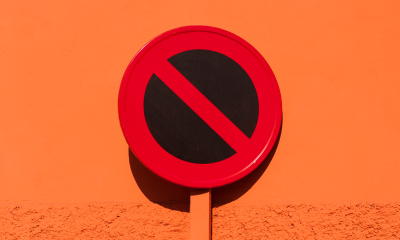Technology
In some ways, it got better for ride-sharing drivers in 2018.

Disclosure
Every product here is independently selected by Mashable journalists. If you buy something featured, we may earn an affiliate commission which helps support our work.
/https%3A%2F%2Fblueprint-api-production.s3.amazonaws.com%2Fuploads%2Fcard%2Fimage%2F909409%2F787d1a1a-497a-484e-833c-f18ab83533b2.jpg)
Image: Lane Turner/The Boston Globe via Getty Images
Uber changed its logo and Lyft launched pink and purple e-scooters. It’s been a big year for the two big ride-hailing apps.
For the drivers who supply rides ordered via smartphones, Uber and Lyft might say things were pretty good in 2018. Both companies made a big push to improve the driver experience, from Uber’s new app to both Lyft and Uber’s reward programs. But pay has stagnated and driver rights haven’t improved much — issues that the companies don’t want to examine too closely.
In some cities like New York, London, and throughout Australia, the fight is on with local policymakers to reach the demands of the driver community. Drivers are looking to keep more of each fare and get recognized for their work.
So while drivers and gig workers appeared to be more of a concern this year, it doesn’t mean much if hourly rates barely keep up with minimum wage and companies keep cutting into earnings with their high commissions.
Uber does have a long list of improvements that came after 2017’s 180 Days of Change campaign. When Dara Khosrowshahi came on as CEO in August 2017, he immediately took on driver issues as a priority. To his credit, right as 2018 started he called for portable benefits and worked with Washington state on legislation. In New York City, a fund for drivers piloted with funding for telemedicine and vision benefits. After only a year of in-app tipping, Uber drivers earned $600 million. (Lyft reached $500 million earned since the start of the company.)
By April, a new driver app debuted with real-time earnings, better notifications, and an improved surge map. Little things continually improved on the app, like hands-free voice commands for drivers and other safety features. A big push for driver loyalty arrived in October with a pilot in select cities called Uber Pro. The rewards system for drivers offers extra earnings, cash back at gas stations, and free tuition for online classes at Arizona State University — nothing to sneer at.
Lyft closely mirrored what Uber offered up drivers this year and added their own flair with 30 new driver hubs popping up to help drivers, new app designs that changed the tipping process and bumped up tips 20 percent, and a stream of driver changes like dropping the lowest rating, demand charts, and more features coming into the new year. A subtle addition that helped drivers out was mid-ride feedback for shared rides so that criticisms about the route or number of pick-ups was separate from driver ratings.
As Rideshare Guy blogger Harry Campbell said in an email at the end of this month, “2018 brought a lot of positive changes to the driver experience, but not much was done to address the top complaints of low driver pay and high commissions.” He noted that the upcoming IPOs likely mean no rate increases in sight as the companies try to keep costs low.
Jim Conigliaro, Jr., founder of the Independent Drivers Guild representing New York City app-based drivers, is hopeful for 2019. He wrote last week, “2018 began as pretty dark year” that eventually culminated in hard-fought worker victories.
In New York in particular, this past year saw new Uber and Lyft vehicles capped for a year to study congestion and the effect of ride-hailing apps on cities and a new law that requires a livable, minimum wage bumping up pay to $17.22 an hour for thousands of drivers in the new year.
Findings from the Gridwise driver companion app brought in data from 500,000 rides from 2017 and 2018. The hourly average rate increased less than $3 to $16.66 this year, not taking into account inflation and before costs like gas, car leasing fees, and commission. But things are moving upward.
“We expect a better 2019,” Conigliaro said. Maybe it’ll be the year of the driver.

!function(f,b,e,v,n,t,s){if(f.fbq)return;n=f.fbq=function(){n.callMethod?
n.callMethod.apply(n,arguments):n.queue.push(arguments)};if(!f._fbq)f._fbq=n;
n.push=n;n.loaded=!0;n.version=’2.0′;n.queue=[];t=b.createElement(e);t.async=!0;
t.src=v;s=b.getElementsByTagName(e)[0];s.parentNode.insertBefore(t,s)}(window,
document,’script’,’https://connect.facebook.net/en_US/fbevents.js’);
fbq(‘init’, ‘1453039084979896’);
if (window._geo == ‘GB’) {
fbq(‘init’, ‘322220058389212’);
}
if (window.mashKit) {
mashKit.gdpr.trackerFactory(function() {
fbq(‘track’, “PageView”);
}).render();
}
-

 Business6 days ago
Business6 days agoConsumer Financial Protection Bureau fines BloomTech for false claims
-

 Business5 days ago
Business5 days agoLangdock raises $3M with General Catalyst to help businesses avoid vendor lock-in with LLMs
-

 Entertainment4 days ago
Entertainment4 days agoWhat Robert Durst did: Everything to know ahead of ‘The Jinx: Part 2’
-

 Business7 days ago
Business7 days agoKlarna credit card launches in the US as Swedish fintech grows its market presence
-

 Entertainment4 days ago
Entertainment4 days agoThis nova is on the verge of exploding. You could see it any day now.
-

 Business4 days ago
Business4 days agoIndia’s election overshadowed by the rise of online misinformation
-

 Business4 days ago
Business4 days agoCesiumAstro claims former exec spilled trade secrets to upstart competitor AnySignal
-

 Entertainment7 days ago
Entertainment7 days agoHow to set boundaries in the early stages of dating























